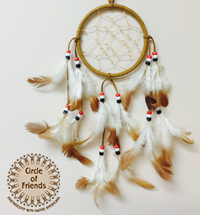| Home | About Us | Services | Success Stories | How to Help | Resources |
 |
of Plains Indians American Horse Amos Bad Heart Bull Ben Nighthorse Campbell Big Foot Black Elk Crazy Horse Dull Knife Francis La Flesche Gertrude Simmons Bonnin Little Wolf Oscar Howe Plenty Coups Red Cloud Robert Eugene Megginson Sacajawea Sitting Bull Spotted Tail Standing Bear Susan La Flesche Susette La Flesche Washakie History and Culture Reservations Living Conditions Site Map FAQs Gift Catalog IRS Form 990 |
Biographies of Plains Indians Crazy Horse — 1842-1877 Crazy Horse, a principal war chief of the Lakota Sioux, was born in 1842 near the present-day city of Rapid City, SD. Called “Curly” as a child, he was the son of an Oglala medicine man and his Brule wife, the sister of Spotted Tail. By the time he was twelve, he had killed a buffalo and received his own horse. His father gave him his own name, Crazy Horse. While living with his uncle Spotted Tail, Crazy Horse watched as a group of soldiers attacked Sioux leaders who were trying to mediate a dispute. Spotted Tail then led a group of warriors to attack the soldiers. Sometime later Crazy Horse returned from a buffalo hunt to find the village burned to the ground and eighty-six people dead. Finding a few survivors, Crazy Horse was told that U.S. cavalry had attacked the village. While still a young man Crazy Horse went on a vision quest and had a vivid dream of a rider in a storm on horseback, with long unbraided hair, a small stone in his ear, zig zag lightning decorating his check and hail dotting his body. The storm faded and a red-backed hawk flew over the rider’s head. His father interpreted the dream as a sign of his son’s future greatness in battle. Crazy Horse adopted the costume as his war dress. During Red Cloud’s War in 1866-1868 Crazy Horse joined in raids against white settlements and forts in Wyoming. When the Treaty of Fort Laramie was signed in 1868 and the Army agreed to abandon its posts along Bozeman Trail, Red Cloud and Spotted Tail settled on reservation lands. Crazy Horse became the war chief of the Oglalas. He was only 24 years old. Crazy Horse learned in 1874 that General Custer had led an expedition into the sacred Black Hills and found gold at French Creek. Prospectors and speculators swarmed into Sioux land ignoring the fact that the land had been guaranteed to the Lakota by the Fort Laramie Treaty. To ensure the safety of the white travelers, the government issued an order requiring that the Sioux bands be required to stay on the Great Sioux Reservation. Crazy Horse and his followers ignored the order and the Army organized a campaign against them. On the upper Rosebud Creek in southern Montana, General George Crook’s army of thirteen hundred attacked twelve hundred warriors led by Crazy Horse. Crazy Horse had over the years become a daring military strategist, adept in the art of decoying tactics. His feinting and assault techniques baffled Crook who withdrew. Crazy Horse now joined with Sitting Bull and Gall at the Bighorn River in Montana. When Custer attacked on June 25, 1876 Crazy Horse led his warriors against Custer’s men from the north and west, while Gall charged Custer from the south and east. Custer’s force, including Custer himself was completely destroyed. After the battle the Sioux encampment split up with Sitting Bull heading to Canada and Crazy Horse and his followers traveling back to the Rosebud River. However, despite winning several battles, Crazy Horse band could not win the war. Intense harassment by the military and the loss of their food source, the buffalo, finally forced Crazy Horse and his followers to surrender on May 6, 1877 at Ft. Robinson in northwest Nebraska. He was promised a reservation in the Powder River country. It did not happen. After a few months on Red Cloud’s reservation Crazy Horse left without permission to take his sick wife to her family at the Brule Agency about 40 miles away. On his way back forty government scouts arrested him. While being lead toward a stockade, Crazy Horse resisted at the sight of the prison. A soldier bayoneted him through the abdomen. He died the same night. |
Join our Circle of Friends - make a monthly gift!
We call this group Circle of Friends, because a friend is someone who makes a lasting commitment. You will receive* a free "thank you" gift for donating monthly: a beautiful dreamcatcher. (* While supplies last.) |





